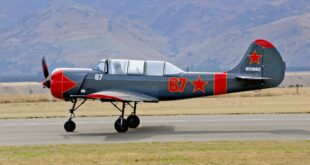When civilisations started growing, people began settling in. Hamlets became small towns, and slowly small towns became big cities. As population and opportunities grew, we started growing vertically, living in apartments and and high-rise buildings.
Have you ever thought why people started settling in one place? To cut down the travel time from home to place of work.
In comes the drone. I will stick out my neck and predict that in the years to come, our cities will widen and people will start living at far off places. Because travelling 30 kilometres in a drone will take less than 10 minutes, as opposed to a car ride of an hour or more in cities like New York, Delhi or Mumbai. Drone travel will be as natural ‘as crow flies’ and devoid of traffic hassles, giving the city an opportunity to grow laterally rather than vertically. People could travel 100-120 kilometres in 45 minutes to an hour. This means, even satellite cities could be connected to the central city seamlessly. For example, people could commute from Jaipur to Delhi and go back to Jaipur at the end of the day.
That is the transformation we are looking at with drones. Companies could operate these drones from a centralised operations room without the need for an onboard drone operator. For example, you could ask for a drone drive after you land at Delhi airport to reach somewhere in Noida. You hop on to an ‘Uberdrone’ and it takes you to the roof of your building, or in front of your home. You would be home from the airport in a matter of 10-12 minutes.
Last-mile connectivity would also include small-scale logistics being transported within the city and from a city to a satellite town. These logistics drones could carry a pizza to a few tonnes of load to and from the destination, within a few hundred kilometres. This too is going to be a reality soon.
Large and densely populated countries like India are considering making drone corridors between cities so that material (and later people) could travel between any two cities in a cost-effective and timely manner.
Transportation of COVID-19 vaccines using drones was a great technology demonstration to the world — that even cold chain management can be done effectively using drones as the time required for anything to reach from place A to place B is much shorter aerially than being transported by road.
Imagine the decongestion that this ‘last mile connectivity’ using drones would offer. Your eternal time on the road would reduce drastically, time with family would improve tremendously, and cities could become cleaner both in terms of fewer people on the road and least amount of carbon fuel burn.
Boost to Agriculture Sector
The agriculture sector is witnessing a massive change with the inclusion of drones. Drones would fly around to find out what is wrong with the crops, transfer that data to another spraying drone, which would do something called ‘variable rate spraying’ of nutrients and natural insecticides and pesticides to the required area of the crop. This is not science fiction. Instead of Soil Health Card, it could be a ‘Crop Health Map’ on the farmer’s phone. I had presented this idea to the Ministry of Agriculture and Farmers’ Welfare.
Governments worldwide are pushing for drone technology in agriculture. This technology, for instance, is likely to change how tea estates operate. Spraying schedule in a tea estate is a very strict regimen. The tea-growing association controls it. People who spray in a tea estate have been doing so for many generations now, and inhale harmful chemicals.
But all this could change as the new technology of drone-based spraying, using Variable Rate Technology (VRT), will reduce the content of insecticides and pesticides in your tea and save the community that has been carrying out the spraying operations in tea estates for generations now.
For Land Survey
This area has seen a maximum penetration of drones. Many countries have started using drones to digitise their land records. ‘Project Swamitva’ by the Government of India is one such example. Civil engineers and large-scale project executing companies have begun using drones extensively to create digital documents for their projects, be it large-scale dams or roads. Total station survey has become a thing of the past, and drone-based surveys are now being carried out across the world.
If I were to explain this process, a total station survey with 700 to 800 points in the project area would take months as opposed to a drone-based study of the same area with millions of points in less than a day. That is the kind of paradigm shift we are about to see with use of drones in surveys.
Safety and Security
This is the area that first saw drones being used extensively. Drones used in this area were initially large-scale surveillance drones like Global Hawk, Searcher, Heron etc. Slowly, smaller drones too started picking up steam. Indian armed forces began using them extensively, followed by the Border Security Force and the Central Reserve Police Force. Today you can see these drones flying along the borders carrying out surveillance activities while staying within the boundaries, looking well inside the enemy area. Some of these drones have exceptional capabilities like infrared cameras, thermal cameras, laser designators etc.
This area turned drone companies into a sustainable model as business opportunities available worldwide runs into multi-million dollars.
Self-destructing Drones
Self-destructing drones, aka Kamikaze drones, have shown the world that they can change the face of the war if applied innovatively and timed correctly. The war between Armenia and Azerbaijan is a case in point. CIA has been using drones in their ‘War on Terror’ effectively for over two decades now. American fighter aircraft F/A-18 demonstrated that it could launch these self-destructive drones in a swarm and overwhelm the enemy in no time. Many countries are working on getting their hands on this technology asap, including India.
These Kamikaze drones will ensure that soldiers seldom come into contact in a battle. It will also reduce collateral damage as these drones have a very limited warhead and could attack any target precisely. So, in a conventional war, these Kamikaze drones could bring in some changes in the conduct of war itself.
Budget Allocation
Many countries have realised that it is high time they spend their time and money on this technology. India is no different; our government understood the potential of drones much earlier than many countries. We formulated business-friendly policies, simplified procedures and allocated funds for drones. Like the way we took the world by storm in the Information Technology sector, I have no doubt that we would be world leaders as far as drones are concerned, in the years to come.
The author is Group Captain (retd), Fighter Pilot, MiG-21, Mirage-2000. He is DGCA-nominated Qualified Flying Instructor and Aircraft Accident Investigator. The views expressed in this article are those of the author and do not represent the stand of this publication.
Read all the Latest News, Breaking News and Coronavirus News here.
 Unmanned Aerial Vehicle The latest drone news
Unmanned Aerial Vehicle The latest drone news



